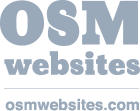Public Health Agency of Canada CORONAVIRUS HOTLINE 1-833-784-4397
Personal Protective Equipment
Quick Index
Policies and standards related to PPE Conservation, Decontamination of N95 Facemasks and Prevention and Management of Skin Damage related to PPE use that Infection Prevention and Control professionals may use to support their own documentation and best practices during the COVID-19 Pandemic.
Prior to any patient interaction, all healthcare workers (HCWs) have a responsibility to assess the infectious risk posed to themselves and to other patients, visitors, and HCWs. This risk assessment is based on professional judgment about the clinical situation and up-to-date information on how the specific healthcare organization has designed and implemented engineering and administrative controls, along with the availability and use of personal protective equipment (PPE).
In response to the emergence of COVID-19 variant B.1.1.529 (Omicron variant) recommendations for infection prevention and control measures for direct care of patients with suspected or confirmed COVID-19 in healthcare settings include:
- Well fitted respirator
- eye protection (e.g., goggles or face shield)
- gowns
- gloves
Recommended PPE for all patient encounters should be based on a point of care risk assessment (PCRA), which should consider:
- community epidemiology of COVID-19
- ventilation assessed by the organization as adequate
- crowding and occupancy of spaces
- patient not yet clinically evaluated (e.g., Emergency Areas)
- likelihood of exposure to SARS-CoV-2 and other pathogens based on:
- specific interaction
- specific task
- specific patient
- specific environment, and
- available conditions
Additional recommendations include:
- Continue to adhere to, reinforce, evaluate and monitor the full range of existing COVID-19 infection prevention and control measures and guidance
- Continue to implement and re-evaluate the hierarchy of controls within the healthcare environment including:
- engineering and administrative controls
- all HCWs should be vaccinated with booster vaccines
- processes and written procedures to manage HCW exposures to COVID-19 and illness
- environmental cleaning and disinfection
- active screening and notification
- physical distancing
As information becomes available, these recommendations will be re-evaluated and updated as needed. HCWs should refer to provincial and territorial guidance and facility policies on specific recommendations for use of medical masks, eye protection and other PPE, as well as PPE conservation strategies.
For further PPE guidance refer to:
- Infection prevention and control for COVID-19: Interim guidance for acute healthcare settings (PHAC)
- Update with consideration of Omicron – Interim COVID-19 infection prevention and control in the health care setting when COVID-19 is suspected or confirmed– December 23, 2021 (PHAC)
Medical Masks and Respirators
- COVID-19 medical masks and respirators: Overview
- COVID-19 medical masks and respirators: Information for health professionals
- Safety and performance specifications for respirators during COVID-19: Guidance for Canadian manufacturers
- IPAC Recommendations for Use of Personal Protective Equipment for Care of Individuals with Suspect or Confirmed COVID-19 (PHO)
- PIDAC Best Practices for Prevention, Surveillance and Infection Control Management of Novel Respiratory Infections in All Health Care Settings
- COVID-19 medical masks and respirators: Reprocessing N95 respirators
- COVID-19 medical masks and respirators: How to get authorization
Non-Medical Masks (PHAC)
.png) COVID-19 mask use: Advice for community settings
COVID-19 mask use: Advice for community settings- Non-medical Masks and Face Coverings
- Non-medical Masks -How to put on, remove and clean
- Non-medical Masks -Sew and no-sew instructions
- COVID-19 mask use: Advice for community settings
- How to safely use a non-medical mask or face covering (poster)





